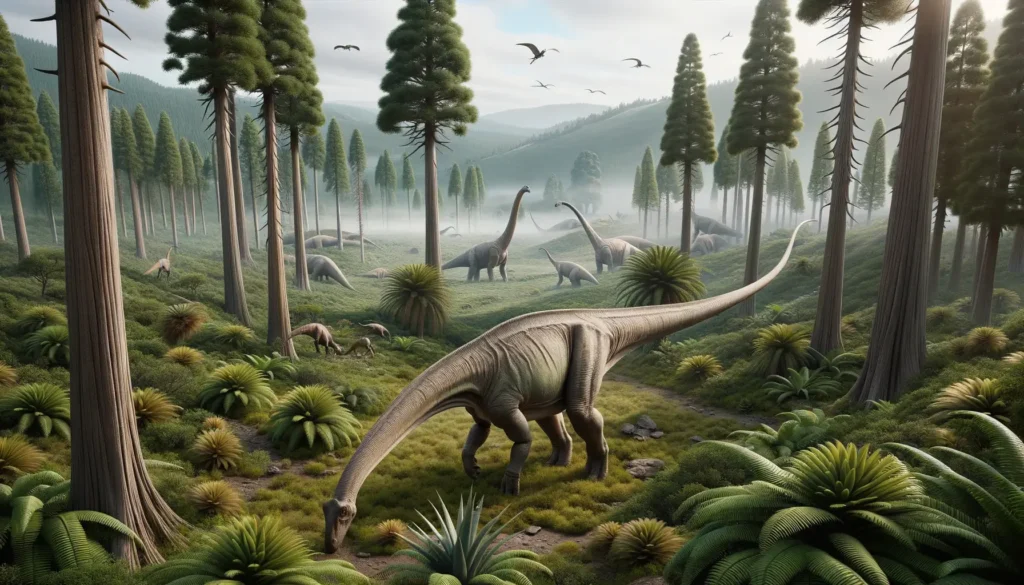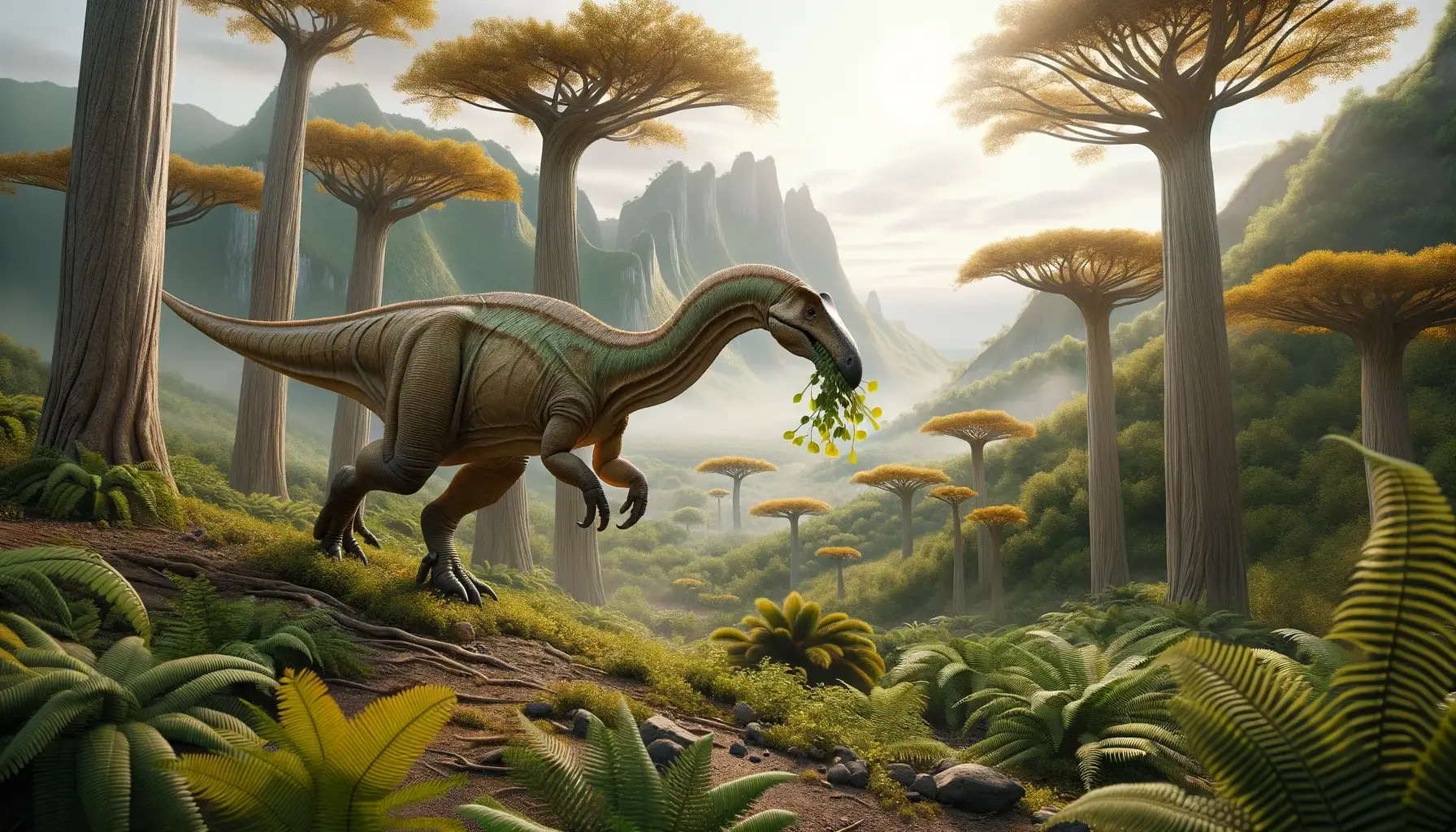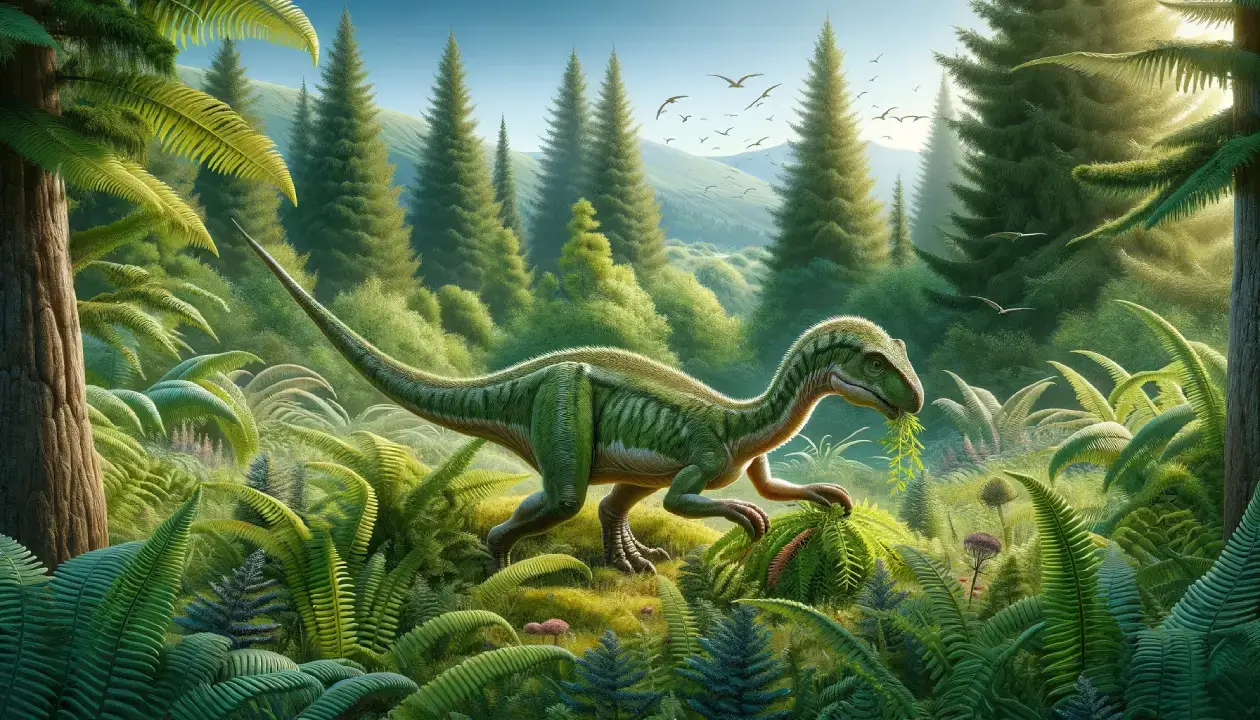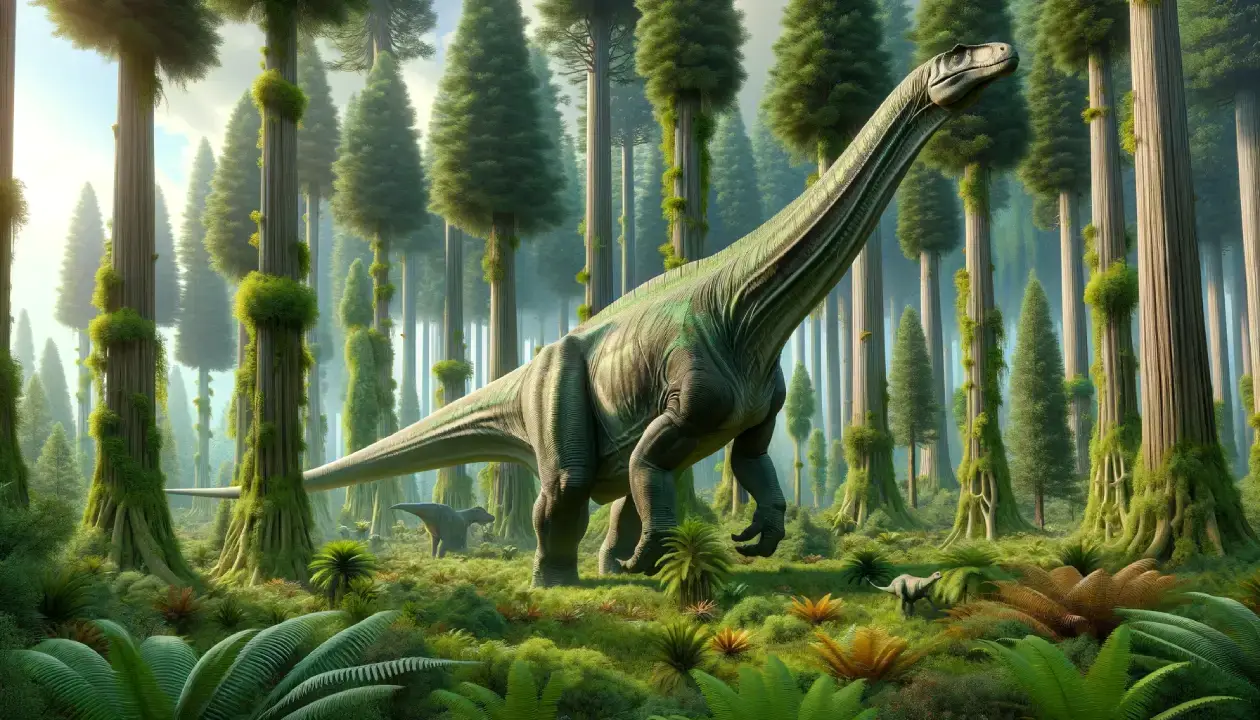Aardonyx was a primitive sauropod dinosaur that lived in what is now South Africa during the Early Jurassic period, about 195 million years ago. It was one of the first dinosaurs to show features of both bipedal and quadrupedal locomotion, such as a long neck, a small head, and a robust body. It fed on low-growing plants and had a large gut to digest them. Aardonyx helps us understand how the giant sauropods evolved from their smaller ancestors.

Basic Information
| Feature | Details |
| Time Period | Early Jurassic (195 million years ago) |
| Diet | Herbivore |
| Length | About 7 meters (23 feet) or more |
| Weight | About 2 metric tons (2.2 short tons) or more |
| Size | Medium |
| Posture | Bipedal or Quadrupedal |
| Locations | South Africa |
| Continent | Africa |
| Type | Sauropod |
| Habitats | Ridge |
Description of Aardonyx
Historical Context
Aardonyx was first discovered in 1987 by a team led by Jack Horner, who also named and described it in 1994. The fossils of Aardonyx were found in the Two Medicine Formation, a rock layer in Montana, which gives the dinosaur its name. Aardonyx is known from several partial skeletons and isolated bones, mostly from juvenile or small adult specimens. The specific name, A. horneri, honors Jack Horner, an influential American paleontologist famous for his Montana dinosaur discoveries.

Physical Attributes
Aardonyx was a medium-sized sauropod, a group of long-necked, plant-eating dinosaurs that includes some of the largest animals ever to walk on Earth. However, compared to other sauropods, Aardonyx had some unique features. Its neck and tail were relatively short, but its limbs were long and robust. Its body was slender and light-weight, indicating that it was an agile and fast runner. Its skull was small and narrow, with a beak-like structure at the end of its jaws. Its teeth were spoon-shaped and had wavy enamel, which helped it to cope with tough plant material. This feature was previously thought to be exclusive to the duck-billed dinosaurs that lived later in the Cretaceous Period. Aardonyx also had bony armor-like structures called osteoderms on its body, which may have provided protection or display.
Feeding Habits
As a herbivore, Aardonyx fed on plants, mainly ferns, cycads, conifers, and ginkgoes that grew in the ridge habitat of Africa during the Early Jurassic Period. Unlike some other sauropods that could reach high branches with their long necks, Aardonyx probably browsed on plants that were closer to the ground. It may have used its strong neck muscles to pull down branches or strip leaves from stems. It is possible that Aardonyx swallowed stones (gastroliths) to help grind up the plant material in its stomach.
Unique Features
The most distinctive feature of Aardonyx was its ability to switch between bipedal and quadrupedal locomotion. Its long legs and light body allowed it to run fast on two legs when needed, using its tail for balance. However, it could also walk on all fours when browsing for food or resting. This suggests that it was a transitional form between the smaller bipedal sauropodomorphs and the massive quadrupedal sauropods. To further support this idea, Aardonyx shows some features that are typical of the more advanced sauropods, such as an enlarged thumb claw and a reduced fifth toe.
Movement and Speed
Aardonyx was a bipedal or quadrupedal dinosaur, meaning it could walk on two or four legs. It had short but powerful limbs that supported its light body. Its feet had five toes each, with claws on the first three toes. Its thumb claw was enlarged and may have been used for defense or digging. Aardonyx was a fast runner, capable of reaching speeds of up to 40 kilometers per hour (25 miles per hour). It used its long tail for balance and steering.
Cultural Impact
Aardonyx is not very well known among the general public, but it has appeared in some books, documentaries, video games, and toys that feature dinosaurs. Some examples are:
- The book The Complete Dinosaur (2012), edited by M.K. Brett-Surman, Thomas R. Holtz Jr., and James O. Farlow, which includes a chapter on Aardonyx by Peng Guangzhou.
- The documentary Dinosaur Planet (2003), produced by Discovery Channel, which features Aardonyx in the episode “”Alpha’s Egg”” as a prey item for a Sinraptor.
- The video game Jurassic World Alive (2018), developed by Ludia, which allows players to collect and battle with various dinosaurs, including Aardonyx.
- The toy line Jurassic World Dino Rivals (2019), produced by Mattel, which includes an Aardonyx figure with movable head and tail.

Interesting Facts
- Aardonyx is related to some of the most famous dinosaurs, such as Diplodocus and Brontosaurus, which belong to the same group of sauropods called diplodocoids.
- Aardonyx lived in a diverse and rich ecosystem that included other sauropods, such as Paralititan and Rebbachisaurus, as well as theropods, such as Carcharodontosaurus and Spinosaurus.
- Aardonyx is one of the few sauropods that have osteoderms, which are bony plates or spikes embedded in the skin. Osteoderms are more common in other groups of dinosaurs, such as stegosaurs and ankylosaurs.
- Aardonyx may have lived up to 50 years old, based on the growth rings in its bones.
Related Dinosaurs
- Paralititan: A close relative of Aardonyx that also had osteoderms and a hump or a sail on its back, but was much larger and lived in swampy habitats.
- Argentinosaurus: A distant cousin of Aardonyx that was one of the largest dinosaurs ever, with an estimated length of 35 meters (115 feet) and weight of 73 metric tons (80 short tons).
- Brachiosaurus: A primitive sauropod that had a long neck and a short tail, and was one of the tallest dinosaurs, reaching up to 13 meters (43 feet) at the shoulder.







